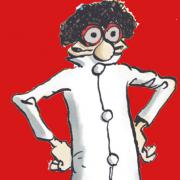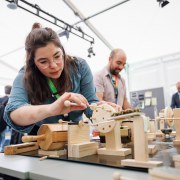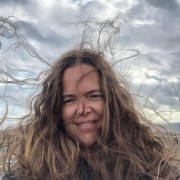During the pandemic, science centres adopted a special role in children's daily lives. They proposed a platform to play with science at home but were also responsible for an important relay of information in a time of disinformation. Now that we are almost “back to normal”, have our methods changed? What should (or shouldn't) we do differently to connect with children? What mindshifts are necessary to produce efficient interactivity for a child? During this session we provide several examples of exhibitions or initiatives addressed to children between 2 to 12 years of age, exploring how science can have a special connection with our younger audiences. Moreover, we will also explore a diversity of subjects that are able to stimulate children's motivation and eagerness to learn.
Head of Science/Culture Dpt
Montpellier
France
Muséographe
Universcience
Paris
France
In february 2020, the Commission WHO-UNICEF-The Lancet "A futur for the world's children?" lays a fondation for a new global movement for child health and position kids in the center of the SDGs. Following the publication and the Covid-19 crisis, different actors took places around the table (#LearningPlanet) : Youth is already committed around the world, lets hear them. Those discussions also showed that when we talk with kids about environmental and social crisis they want to commit, but don't know how. It's our place as adults, but also as science centers, to give them (and their adults) the tools to commit.
Those publications and conferences inspired the next temporary exhibition conceived by Le Vaisseau. "Colibri" (unofficial title) will propose to kids from 7 to 12 yo different ways to commit daily basis both into social and environmental causes. Why to commit, on what topics and how ? This are some questions the exhibition will try to answer.
Director and Driver
Duesseldorf
Germany
Since the pandemic only made a few changes to exhibits necessary, to make them more safe for hygienic reasons, outdoor formats have been requested a lot more, and online formats have been tried. Some worked well even with the obstacles of online-communication like latency, which affects music a lot. Good was: the general slow-down gave a chance to rethink the relation between Music and the SDG´s in many ways. A special focus is how an polyaesthetic and emotional connection to themes like biodiversity, water, equal communication, re- and up-cycling could be transported by and connect with music and sound.
Teacher/Developer
Kinna
Sweden
During the pandemic, many changes in our teaching approaches had to take place. This did not only address the children but also their teachers and other staff. Although we are longing to be able to welcome everybody back to our fantastic house, we realize that some of the changes that have been made are here to stay. Changes range from making new digital programs to adjusting existing activities to digital or outdoor formats. The approaches that will be presented from Navet´s arena range from adjusting international sustainability projects on the other side of the world completely into digital formats, to making physics outdoor activities with very young children an engaging long-term training and mindset changing activity for kinder garden teachers. Dos and don´ts.




